Ultraviolet Spectroscopy System – DNA Repair
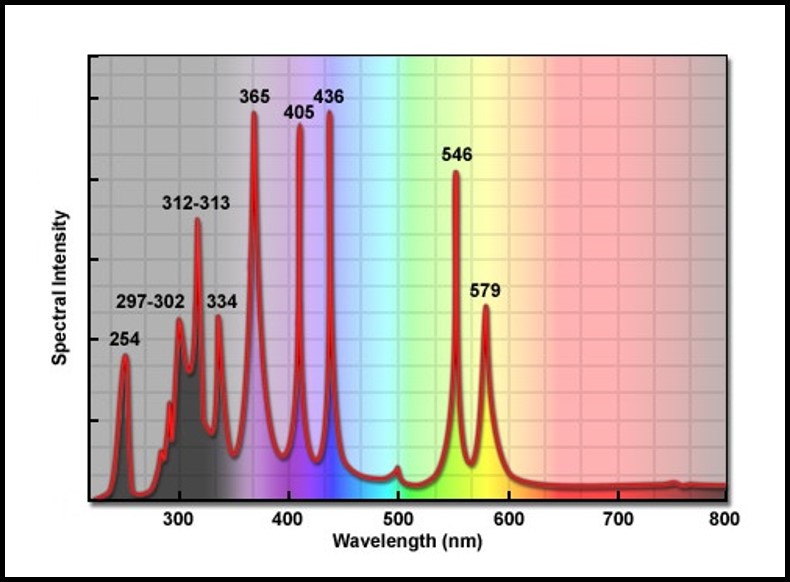
Developed a UV spectroscopy system for biological applications to study how photoreaction enzymes repair damaged DNA by inducing ultraviolet light. Photoreactivation is the reversal of the harmful effects (growth delay, mutation, cell death, cancer) due to far-UV radiation (200-300 nm) on organisms by exposure of the organism to near-UV/blue light (300-500 nm). The photoreaction enzyme was discovered by Dr. Claud S. Rupert while he was at Johns Hopkins University. He continued this research at UTD and was on my doctoral committee. The system that I developed utilized a Hg lamp source, Jarrell-Ash Spectrometer and a Princeton Applied Research optical multichannel analyzer OMA-1205 for spectral analysis.
Biomedical Manufacturing Equipment
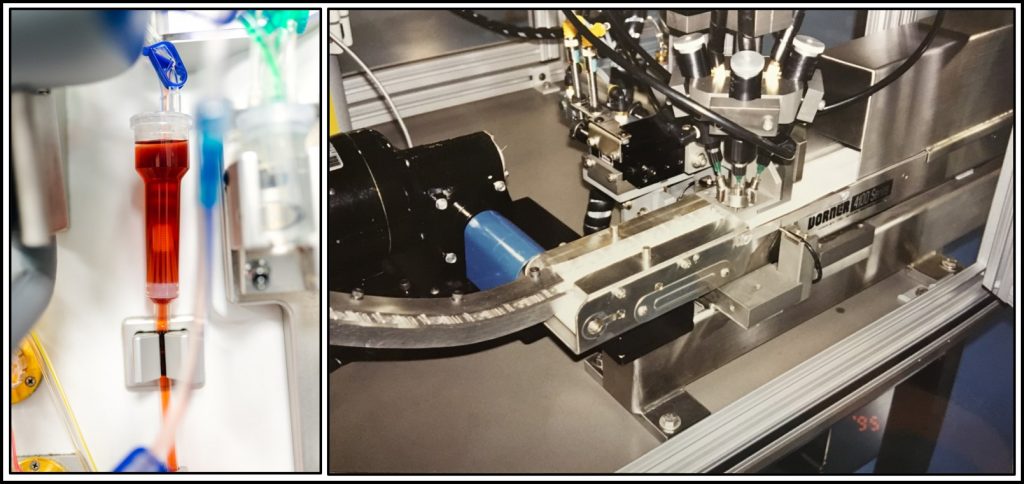
Developed and designed instrumentation and control systems for biomedical manufacturing equipment. The machines used programmable logic controllers (SLC-5, PLC-5 – Allen-Bradley – Rockwell Automation). Manufacturing applications included process control analyses, statistical measurements, and quality control implementation. Systems were built for manufacturing blood pressure sensors, surgical manifolds for delivery of fluids and gases, fluid collection systems, eyeglass lens handling and packaging, medical fiber-optic assemblies, and lens coating process equipment.
Entropy and Complexity for Concussion Evaluation
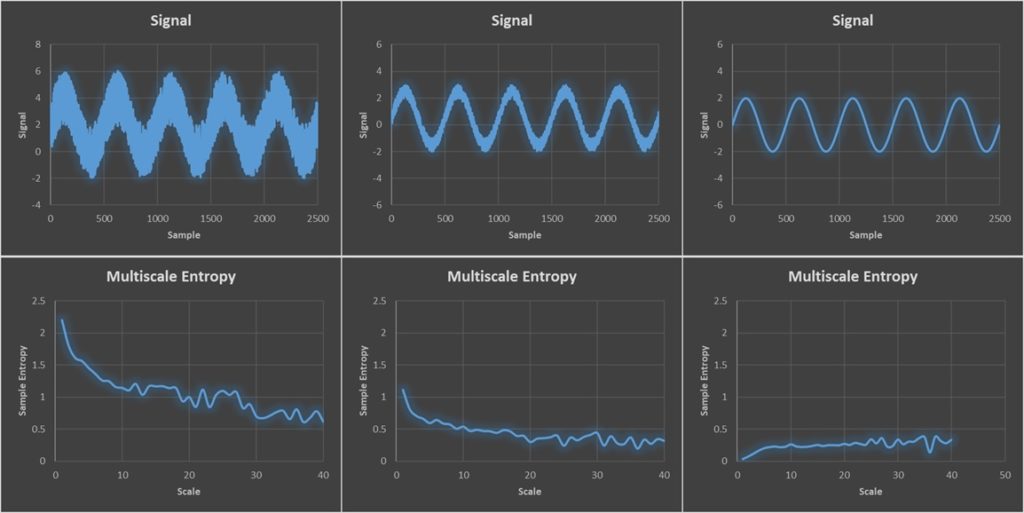
Developed routines using LabVIEW, MATLAB, and Excel for obtaining center of pressure (COP) sway measurements and determining the entropy and complexity of the signal. The entropies were calculated using the modified multiscale entropy algorithm which utilized a moving-average procedure and progressively coarser time resolutions for constructing multiple time scales. Sample entropy (SampEn) was used in the algorithm to quantify the degree of irregularity for the time series of each scale. The postural complexity index was calculated as the sum of the sample entropies computed for the different time resolution scales of the COP time series signal. Impaired function has lower entropy and complexity of the signal.
Transfer Function Analysis for Cerebral Autoregulation
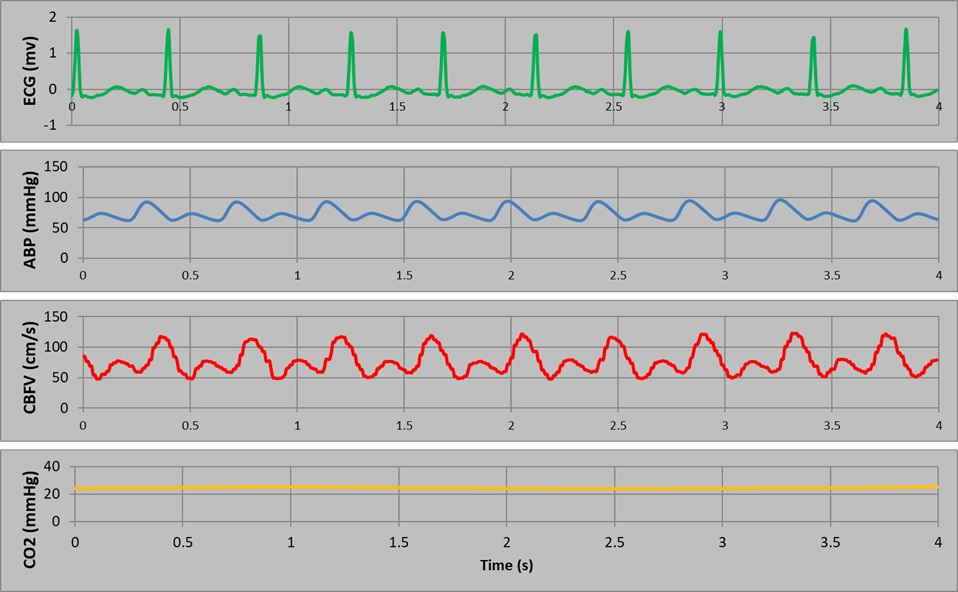
Developed MATLAB software to implement the CARNet algorithm for transfer function analysis of cerebral autoregulation. Cerebral autoregulation is the intrinsic ability of the brain to maintain adequate cerebral perfusion in the presence of blood pressure changes. The dynamic relationship between blood pressure and cerebral blood flow has the characteristics of a high-pass filter and was analyzed using Fourier methods to obtain gain, phase, and coherence between the signals. Impaired cerebral autoregulation has a high gain and low phase relationship between the input (blood pressure) and output (cerebral blood flow).
Biomechanics Force Measurement Systems

Force measurement systems were developed for biomechanical analyses. A portable force measurement push-bar system was built using two AmCells STA-250 load cells interfaced to an Omega DMD-465WB signal conditioner. The unit could be used in tension and compression under any orientation to measure 250 kgf with an accuracy of 0.1 kgf. An in-ground force measurement system was implemented utilizing three FP9090-15-4000 force plates (2.7m x 0.9m) with AM6800 amplifiers interfaced to a National Instruments PCIe-6323 data acquisition board. Another force measurement system used an embedded AMTI force plate (2.0m x 0.68m) with a DigiAmp amplifier incorporated into a high-speed treadmill. Software was developed for all three systems to acquire and filter the applied forces and to convert the data to 3D ground reaction forces and 2D center of pressures.
Motion Capture Systems
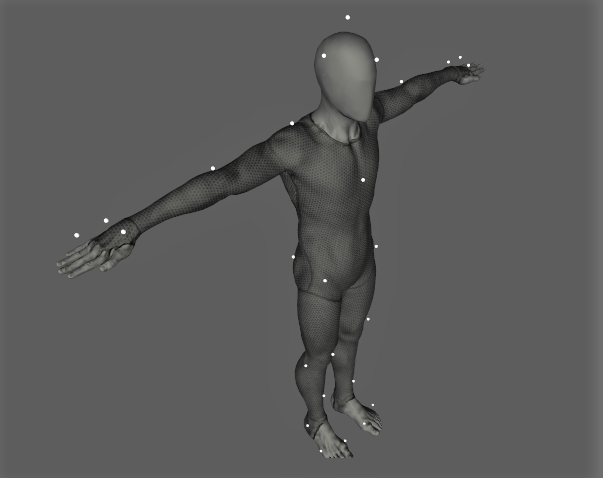
These systems were developed for kinematic analyses in biomechanical applications. The 3D high-speed video system consisted of 2-4 Fastec Imaging (Mikrotron GmbH) HiSpec 2G cameras which operated at up to 1280 x 1024 pixels and up to 112,000 frames per second (fps). The 3D infrared system consisted of 12 OptiTrack Prime 17W cameras operating at up to 360 fps. The laser timing system consisted of multiple Banner Engineering QS186LE laser emitters and QS18 receivers with a 0.75 ms response time interfaced to a National Instruments PCIe-6323 data acquisition board with 1000 fps sample rate. Motion capture software included Motive, LabVIEW, MATLAB, Excel, and VBA routines for calibration, acquisition, and analysis.
Biomedical Sensors and Instrumentation
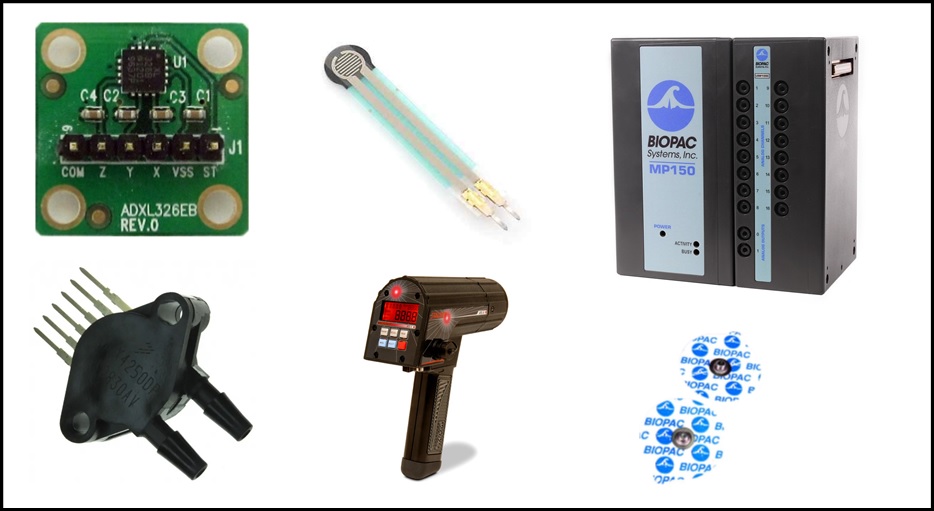
Developed interface circuits and amplifiers for accelerometers (Analog Devices ADXL series), pressure sensors (NXP MPX series), and force sensitive resistors (Interlink Electronics FSR series). Sensors interfaced to a Biopac data acquisition system and were synchronized through a custom trigger box and optoisolator interfaces. Configured 12 channel electromyography system (Biopac EMG100C) and wrote EMG analysis routines. Configured hardware and developed algorithms for filtering and correctly processing data from ATS II sports radar gun used to obtain velocity-time measurements.